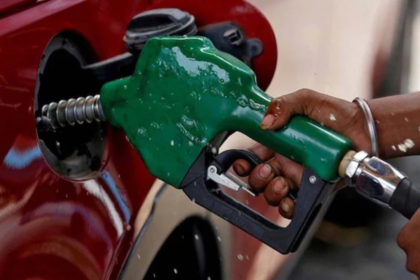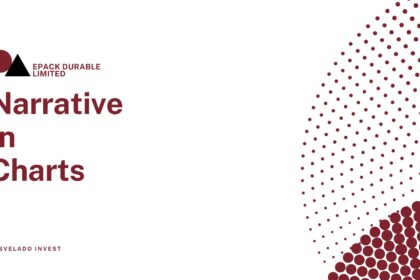Research By: Bhumika Jain
What started as a bold vision to create a world-class airline soon spiraled into one of India’s largest corporate failures, leaving behind a trail of unpaid loans, grounded planes, and an infamous man on the run. How did it all go so wrong? This is the story of Kingfisher Airlines – the rise, the fall, and the staggering fraud that stunned the nation.
Backstory
Before India gained independence, many small breweries used to supply beer to British soldiers. In 1915, a man named Thomas brought these smaller companies together to form the United Breweries Group. Around the same time, Vittal Mallya, a sharp businessman, saw great potential in this new company. He had already invested money in this particular domain, recognized its future growth and began purchasing shares at every small interval of time and that too at the time when no one else was buying. Despite the general lack of interest in the shares at that time, Mallya’s steady investments made him the largest shareholder over time. By 1947, as the British were preparing to leave India, the 22-year-old Vittal Mallya took command of the company due to his majority shareholding.
Setup
Initially, Vittal Mallya was elected as the Director of United Breweries Group, and the following year, he became the chairman. Under his leadership, the company outpaced its competitors in India, acquiring McDowell and other companies by 1951. He implemented various growth strategies, including the introduction of Indian Manufactured Foreign Liquor (IMFL) in 1959 which allowed foreign liquor brands to be manufactured in India.
When Vijay Mallya, Vittal Mallya’s son, joined the business, he established a new corporate structure with positions like president, vice president and managers, creating a clear hierarchy. In 1977, a new government in India imposed a ban on alcohol, which created challenges for the United Breweries Group, which relied heavily on alcohol sales. While many liquor companies opted to sell their assets during this turbulent period, Vittal and Vijay Mallya took a different approach by acquiring those assets at discounted prices. Eventually, alcohol was allowed again in India, leading to the collapse of UB Group’s competitors.
Seeking to diversify, UB Group invested in other sectors like food and pharmaceuticals, but alcohol remained their most profitable venture. In 1978, Vijay Mallya rebranded their beer as ‘Kingfisher’ to compete with the Mohan Meakin Golden brand. Despite compliance issues that initially prevented Kingfisher beer from being sold nationwide, the brand eventually gained prominence.
Case
In October 1983, after Vittal Mallya’s death, Vijay Mallya became the chairman, controlling 2/3rd of the UB Group shares through Mallya Private Ltd. When he took charge, the company had a turnover of ₹350 crores, with a valuation of ₹40 crores and a sales volume of 3.8 million cases (each case containing 9 bottles of 750ml). Vijay Mallya identified that Carew Phipson, a part of UB Group making gin, was highly profitable but seasonal. To ensure year-round profitability, he shifted focus to whiskey, launching new brands like Royal Reserve and Splendor, though these initial efforts failed.
Strategy
Vijay Mallya then turned his attention to the established Kingfisher beer brand. He made some changes in the production of Kingfisher beer like the demand of beer in the south was always persistent but in the north, beer was in demand only in summers. Due to the off season, the plants in the north had to stop their production. On the other hand, the demand for beer in the south was not met.
Vijay Mallya resumed all off-season beer production and produced beer in the north, distributing it in the south. This improved the distribution system across India, allowing them to surpass their competitors.
Secondly, beer was filled in bottles and for liquor company bottles were a huge investment. The beer bottles were bought from dealers and empty bottles were returned. But in most cases, when these bottles were returned to the dealer, half of them were broken, in fact the number of bottles sold was more than the number of bottles returned.
Vijay Mallya found a new way for this, they started making bottles on their own but this even created more problems. Company spent a lot of money making bottles and due to this, a large amount of profit was invested in it. Vijay Mallya identified it and replaced it with cans.
Along with it, the image of Kingfisher was like a light beer in which the alcohol was around 4%. Since people got whiskey at the same price which had more alcohol percentage, they started preferring that more. But Vijay Mallya introduced alcohol with 8% string alcohol and the demand for beer increased even more after its arrival. This brought so much profit that Kingfisher became India’s largest selling brand in 1986.
Expansion
In 1988, Kingfisher became a lifestyle instead of being a name and brand especially in youngsters. This was done by Vijay Mallya through his various strategies.
– In India, alcohol was banned from advertisement so to deal with it Vijay Mallya found a new way by surrogate advertising. Instead of Kingfisher beer; Kingfisher soda and Kingfisher water bottles were advertised. All over India events were conducted in the name of Kingfisher and then the boards of Kingfisher were put up in the events. Kingfisher awards were also awarded.
– In 1988, he even started the Kingfisher Derby although sports isn’t linked anywhere near to Kingfisher beer but since they had to push the name of Kingfisher forward, these things were done.
– The biggest benefit was grasped by the Kingfisher brand when Mallya launched the Kingfisher calendar which was shot by Atul Kasbekar.
Vijay Mallya said that even though it requires money but in long term this will give benefits as such the rest of the competitors will not have any solution to it. All these things were done in such a way that as soon as the Kingfisher name was mentioned, people imagine beer in mind. At the same time, Mallya was also acquiring companies and making the entire business global. Kingfisher was made available in more than 50 countries. UB Group whose valuation was ₹40 crores at the time of his joining reached ₹6000 crores within few years.
Politics
The entire liquor industry has huge profits but to run it government support is very important. If a company wants to send alcohol out of the state then they have to give tax separately and all the rules are watched over by the state government. Government decides the price of a liquor bottle and the license of liquor is also commanded by the government so government support is very necessary if anyone wants to run this business.
In order to deal with all these things Mallya himself wanted to enter politics so that he doesn’t face any problem in future. In 2002, Mallya became a member of Independent Rajya sabha from his home state Karnataka and in this Janta Dal and congress supported him. This incident made his political connections strong.
Kingfisher Airlines
On 15th Nov 2004, Mallya planned to open Kingfisher airline. He arranged a bank call through the CFO to finance the loan but it was rejected by the bank. Then, he planned to self finance it. Next day, a call was made with the head of Airbus India – Kiran Rao and he ordered 10 Airbus A320 and three A319. After this, a board meeting was held for the announcement of floating an airline venture ‘Kingfisher airline’ on 9th May 2005. He himself invested ₹400 crores on Kingfisher airline. As soon as Kingfisher was launched, everywhere its luxury experience was being talked about.
Kingfisher airline had an edge over their competitors as earlier only magazines were kept in the airplanes but Kingfisher placed screens, headphones, good quality food and well trained air hostess. This led to a very good opening for Kingfisher within a year, however profits were not reaching the cost mark but the brand was established. Then, Mallya approached IDBI to buy more planes but there were already some credit issues of UB Group with IDBI, due to this IDBI refused to give loan but Vijay Mallya still invested and placed more orders. After this, Vijay mallya wanted to start international flight but among the civil aviation guidelines, there was a clause according to which airlines should at least run domestic flights for 5 years, only after that it will get the international license.
At that time, apart from JET Airways there was only one airline which had completed 5 years which was Air Deccan, run by G R Gopinath. This Air Deccan had clutched the nerves of the Indian airline as it gave domestic flights at very cheap prices, in fact, in some routes they had kept the price of ₹500 for a ticket. They didn’t have any relation with luxury, their aim was to transport people from one place to another at less price. They even reduced 2 toilets to 1 to place two more seats in the plane. So, in this way they used to operate cheaply. This was the opposite style of Kingfisher. This game of cheap price played by Air Deccan troubled Kingfisher and other airlines. So, Vijay Mallya planned to buy the airline accomplishing two goals, firstly they will get international license and secondly the end of competition.
Due to the desperation, in Feb 2007, he blatantly acquired Air Deccan without checking any balance sheet. After acquiring it, he introduced some changes which didn’t favor them in future. Firstly, they changed its name instantly to Kingfisher Red and secondly, the USP of Air Deccan was its low price tickets but this USP was changed, Mallya increased facilities in the flight. He believed that even if they are giving cheap tickets, they will never compromise with facilities. So, Kingfisher bought a good running profitable flight at a high price and transformed it into a Kingfisher flight. Then, some time later, he increased its price as well and when price increased, people moved to other airlines which were cheaper.
Comparatively, the running cost of Kingfisher was very high, not little bit, but very high. The reason behind it was their facilities and poaching employees from other airlines at 75% salary hike. So, Kingfisher was making a name for itself but due to the expenses it couldn’t ever stay in profit.
In 2008, Mallya turned towards the bank to take out a loan. Banks made a consortium to pass loan. In consortium loan, all the banks together give the loan and one bank would be the point of contact. So, SBI made a consortium of 17 banks and passed the loan. Few days later, Mallya took the loan again, this time from IDBI Bank and the amount was ₹900 crores.
On Sunday, when other banks were closed, the bank was opened that day for loan processing and within 2 days, he got the loan. Now, he bought the flights after receiving the money. Kingfisher started its first international flight from Bangalore to London in 2008 and in the same year, he bought IPL team – Royal Challengers Bangalore after paying ₹446 crores. So, on one hand, loans were taken and on the other hand, teams were bought in hefty amounts. These things then continued for a long time.
After that, when the global recession began, the rates of oil increased and the purchasing power of passengers were also reduced because they also had difficulty in their jobs. At this time, in June 2009, Mallya bought more A330 model planes and in Oct 2010, he bought A380s models.
In June 2010, Mallya became an MP of Rajya Sabha with the support of BJP and Janata Dal. Sometime later, he took a loan from SBI and again a consortium was made and a loan was passed amounting ₹1600 crores. As soon as he got the loan, he bought more planes, Boeing 777. Till here, the entire loan he had taken from every bank was above ₹7000 crores.
Financial Troubles
At this time, the cost of Kingfisher had increased too much, there wasn’t any profit. Global recession had also arrived. The prices of oil had increased. So slowly, its vendor couldn’t be paid the money and due to this, many oil companies like HP and Bharat Petroleum had banned Kingfisher from giving oil because it couldn’t clear the past bills, rest Indian oil companies did not ban Kingfisher but asked for advance payment.
It wasn’t just the problem of oil companies, Bangalore and Hyderabad airports as well asked the landing charges in advance because they used to land their planes and didn’t give the money and that was getting due. So, these airports made a separate rule for Kingfisher that they need landing charges in advance and along with this the installments of loan had been stopped as well.
The catering people hadn’t got their bills paid entirely. Due to all this, passengers started complaining that facilities aren’t proper. All the different vendors whose bill was due were given fake cheques. So, these companies filed a case against Kingfisher regarding the bouncing of cheque. GMR Hyderabad international airport even made the court punish the CFO of Kingfisher for its ₹50 lakhs cheque bouncing. Kingfisher was trapped from all the sides. The salary of staff was also stopped and after a few months, staff began to strike. In 2009, the airline suffered a loss of ₹400 crores and this wasn’t the first year of loss it was happening since 2005. The company never made profit even for once in its whole journey even after that, it took loans from banks, bought planes every year and didn’t reduce their expenditure, they also injected many crores of rupees in PR to increase the valuation of the company. Mallya had stopped staff salaries but he had fixed his own salary amounting to ₹33.46 crores. Even after all these things happened, his style of living didn’t lack anything.
When CBI enquiry started on his loan matters, CBI mentioned that he was not able to pay loan at one place and at the same time he bought a property of €35 million in France. He also made a firm named Gizmo Holdings, through which he was going to do a payment of €8 million in France. This way he made shell companies take loans in India and shifted that money outside.
Legal Issues
In Dec 2011, the Union Minister claimed in Parliament that Kingfisher has not been paying taxes for two years worth more than ₹150 crores. This time, banks declared him a non performing asset.
On 21st Dec 2010, SBI Bank, Vijay Mallya and RBI signed a master debt recast agreement (MDRA) which stated that banks were writing off their loans by taking Kingfisher’s shares. The share value in the market was around ₹38-39 but banks bought the shares at the rate of ₹64. When pressure increased on banks, they stated that the market is down right now so rate has come a little low but Kingfisher’s overall average price is calculated to be ₹64. So, they had converted their loan according to this price.
Bank was providing a loan on the brand value of Kingfisher which was calculated by government banks to be ₹160 crores. There was an audit firm called GrandThornton which has recently been hired by Adani Group and has worked with many government initiatives like Clean Ganga, Niti aAyog, etc. GrandThornton did the auditing of Kingfisher at that time and found out its audit value as ₹4100 crores. So, there was a huge difference in the value stated by those banks and auditing firm. When the loan defaulted, they started to sell the brand in which the main brands were fly Kingfisher, flying models, fly the good times, fun liners, Kingfisher. But there was no one to buy the brand. After this, in Feb 2012, all of Kingfisher’s accounts were frozen. On 20th Oct 2012, DGCA suspended the flying license of Kingfisher airlines. Domestic and international, all of Kingfisher’s operations were shut completely.







